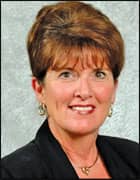 |
A Marketing Drive
Don L. Wilson, DDS, MSD
Novato, Calif
I’m constantly looking for new ways to strengthen my relationships with referring dentists. My latest idea is a high-tech gift that will double as an educational tool. I am downloading an electronic presentation onto a classy, leather USB flash drive that will be debossed with my logo. The file includes examples of complex cases I’ve treated, as well as malocclusions that should be referred to me early. The dentist can copy the file onto any clinic computer as future reference for potential patients, and then can use the USB drive to transport his/her own files. The USB drive is available through Smile! (smile2succeed.com).
 |
Make Debanding Day a Big Deal
Rosemary Bray, Speaker, Trainer, and Consultant
Carlsbad, Calif
The debanding appointment is the culmination of a patient’s entire experience with your practice. In 20 years, your goal is to have this patient looking back at this special day and telling others, not only the name of their orthodontist, but also what occurred on their debanding day, how special you made it, how they will never forget you or what you did for their teeth, yes, and also for their entire life!
Here are some ways to make debanding day festive:
- Tie balloons to the patient’s chair once the procedure has been confirmed, and give the patient the balloons at the conclusion of the visit.
- Have a full goodie bag, all pretty with curly ribbons, set out and ready to give out.
- The clinical debanding procedure should take place with lots of talk and complimenting.
- When you give the patient the mirror, the real praise begins.
- Give the patient a goodie bag with gummy bears, gummy worms, Now and Laters, Shark Bites, Jolly Ranchers, Fruit Roll-Ups, Starburst, Tootsie Rolls, Milk Duds, Red Vines … whatever! To make this really special, you can ask the patient a few appointments prior to the debanding what he or she has given up along the way that he or she is so anxious to have again. Act like you are merely chatting. Then go out and get that and give it to the patient on debanding day! Patients will be amazed that you remembered!
- Give minors a postcard to write a “thank you” note to their parents, or give adult patients a postcard to thank their spouse/partner for putting up with them. You mail it!
- Hand the patient a signed and dated diploma.
- You can also give a diploma to the parents congratulating them for what they have contributed to their child’s dental health and self-esteem. Make them on the computer.
- Set out a debanding card for the entire team to personally sign. Mail it out on debanding day.
- A bottle of wine/champagne can be given to adult patients and a bottle of sparkling cider to minors for toasting themselves later that evening at home.
- Stand around the foot of the chair, clap your hands, stomp your feet, and SING to the patient while the parents are there watching along with all your other patients. Watch the mommies cry, the kids laugh, and the other patients cheer!
Remember that when you sing to patients, it has nothing to do with talent. It is about fun, loud noise, attention, being silly, and making the patient’s day! Use musical instruments, tambourines, maracas, sticks, drums, whatever you can to drown out your awful voices—and have FUN! For a booklet full of songs, see my Web page rosemarybray.com.
 |
Choosing a CBCT Machine
Ed Lin, DDS, MS
Green Bay, Wis
I am a strong proponent of i-CAT from Imaging Sciences because the company support has been phenomenal and it has great follow-through. My advice to practices that are evaluating the transition to 3D is to interview the company—from the sales force to the chief technical officer to the president. When your practice is making that kind of a financial commitment, you need to make sure that you really get to know the people that you are going to be doing business with prior to pulling the trigger—because if you make the wrong decision, it can create havoc in the clinic.
Another tip: Prior to making a decision on a CBCT machine, make sure that you research the reconstruction time in converting the RAW data from the CBCT to DICOM. This reconstruction time is very important because if you want an image right away, it is not like a digital ceph/pan. There is a waiting period of anywhere from 11¼2 minutes to 5 minutes for the i-CAT, depending on the field of view and the thickness of the slices with segmentation. Anything longer than this will slow you down.
 |
Free CPR Certification for Referring Doctors and Staff
Nancy Hyman, Ortho Referral Systems
Montebello, Calif
I recommend offering complimentary CPR certification for referring/potentially referring doctors and staff. In the office of William Hyman, DDS, MS, I have utilized two formats, and each has been equally successful. You may offer the CPR training in your office on a periodic basis or offer it in the referring dentist’s office. Your practice rep will coordinate all aspects of this promotion.
1) Offer CPR in your office three times per year: Each office will receive three mailed notices announcing the dates, spread throughout the calendar year. All three dates will be included on the first notice. As the date passes, eliminate it and list the remaining dates.
Hire a CPR company, and determine the capacity for the CPR educator and the limitations of your office space. Spread dates throughout the year for maximum convenience and exposure.
Consider offering CPR in the referring dentists’ offices if all three events are booked to the maximum.
The benefit of offering CPR in your office is that referring dentists can familiarize themselves with your office and staff. This can be particularly effective if you have relocated to a new office or recently remodeled and wish to acquaint referral sources with your facility.
2) Offer CPR at the referring dentists’ office: The benefit to this system is that the referring dentist can select dates convenient to him/her. However, the orthodontist will not receive as much exposure to the referral source.
Send out three notices per year for referring offices to complete and mail or fax back to the office. The practice rep will contact the CPR company and ask that a designated person select a date with the referring office. The CPR person will confirm dates with the practice rep. The practice rep will confirm with the referring office and the CPR person 2 days prior to the training.
|
Do you have a pearl to share with your colleagues? Please send it to /strong>, along with your headshot and any other pictures you would like to include. |









